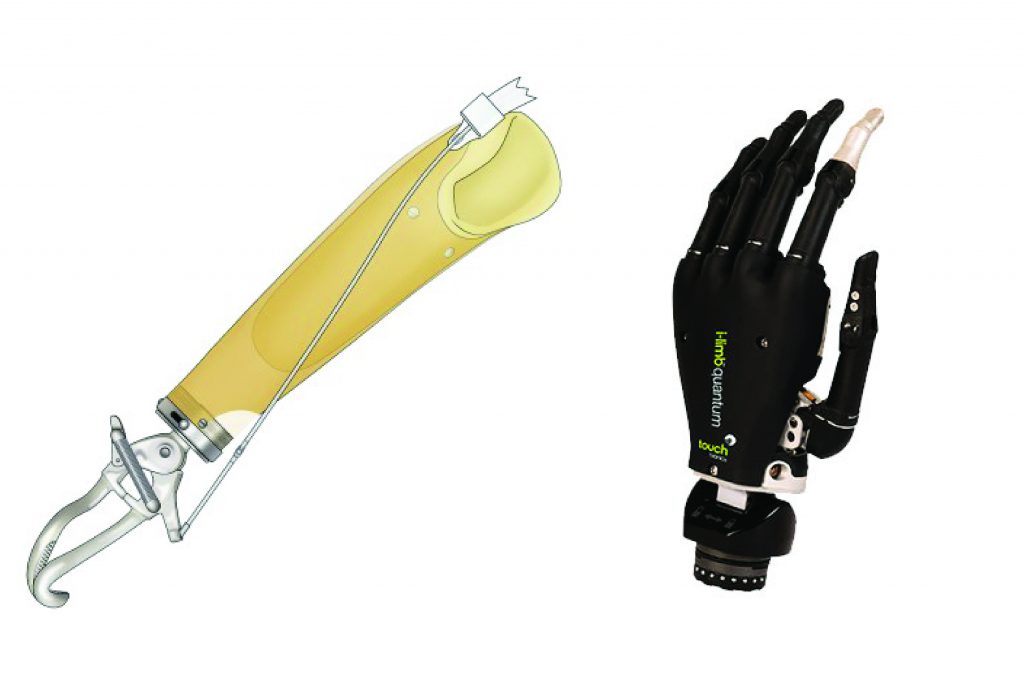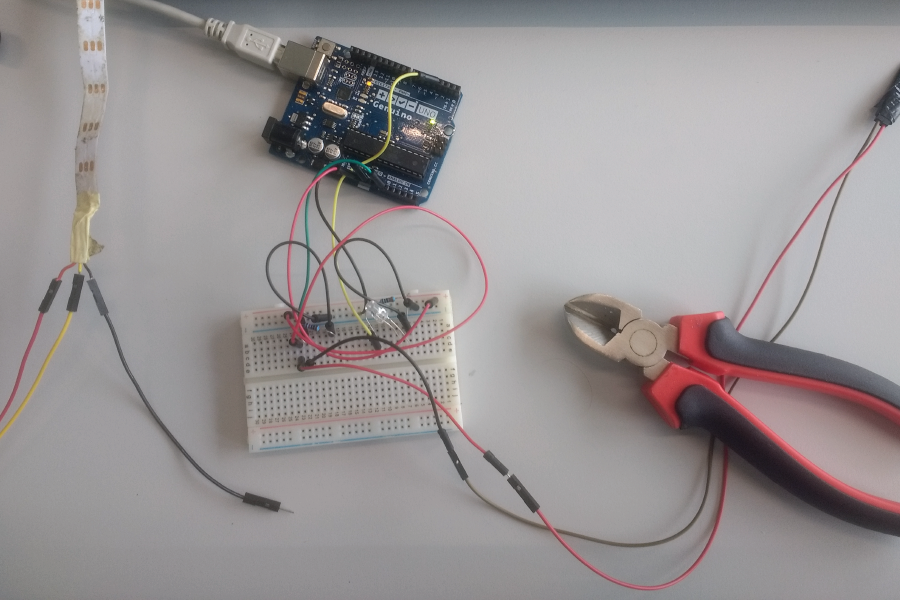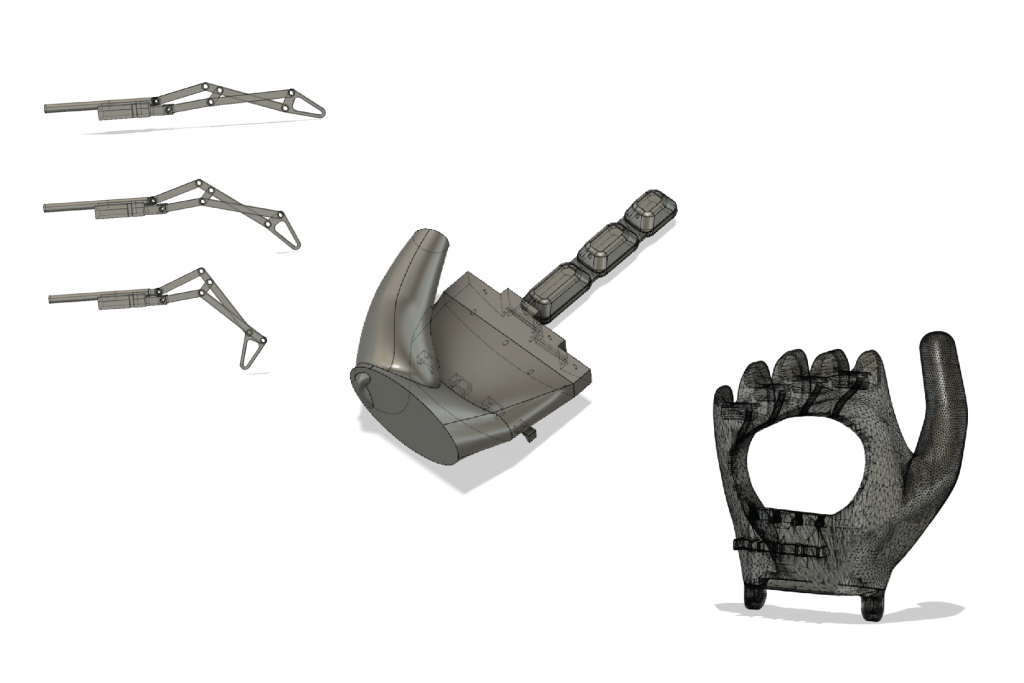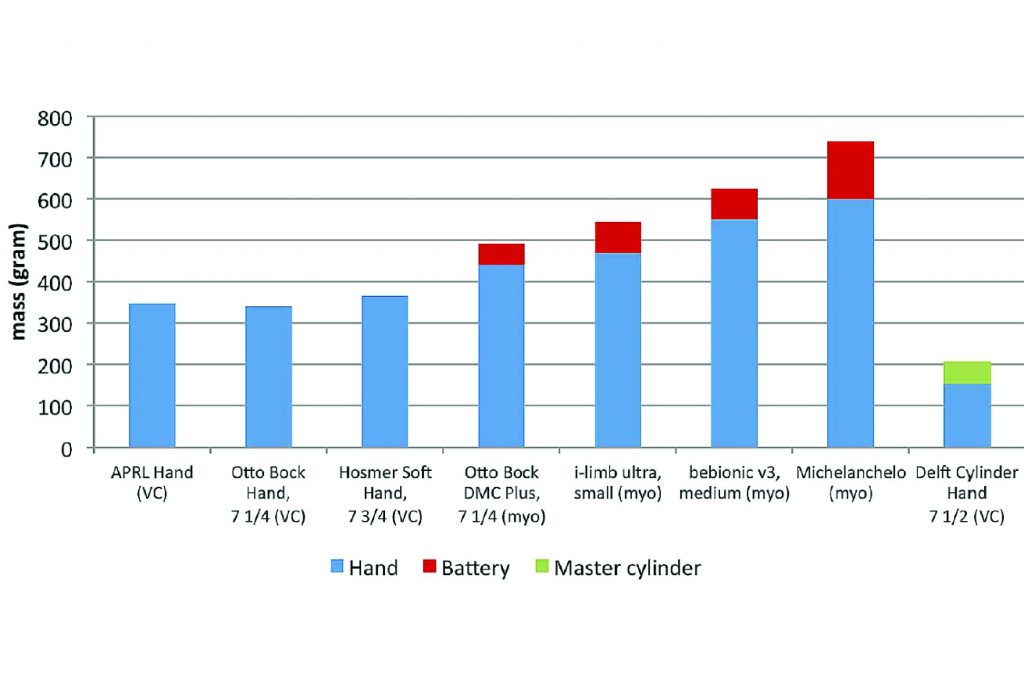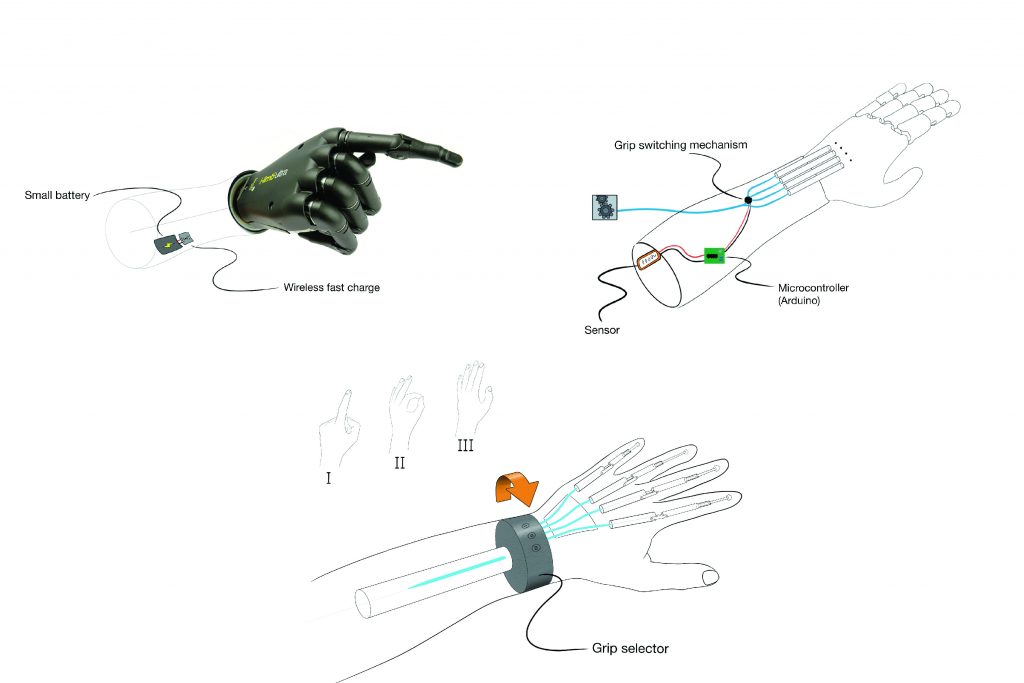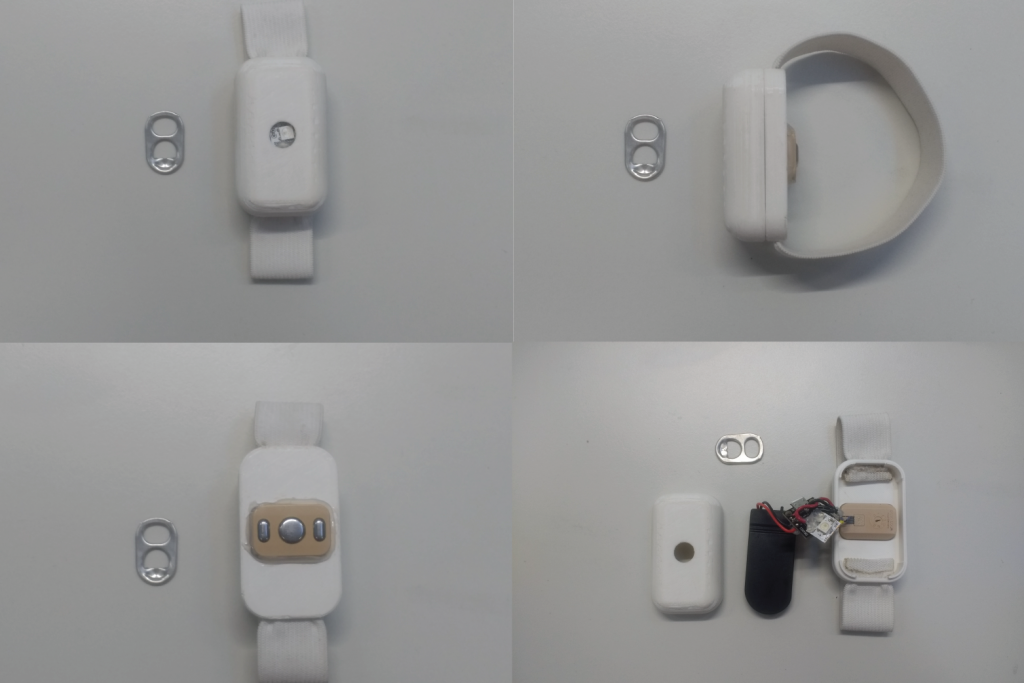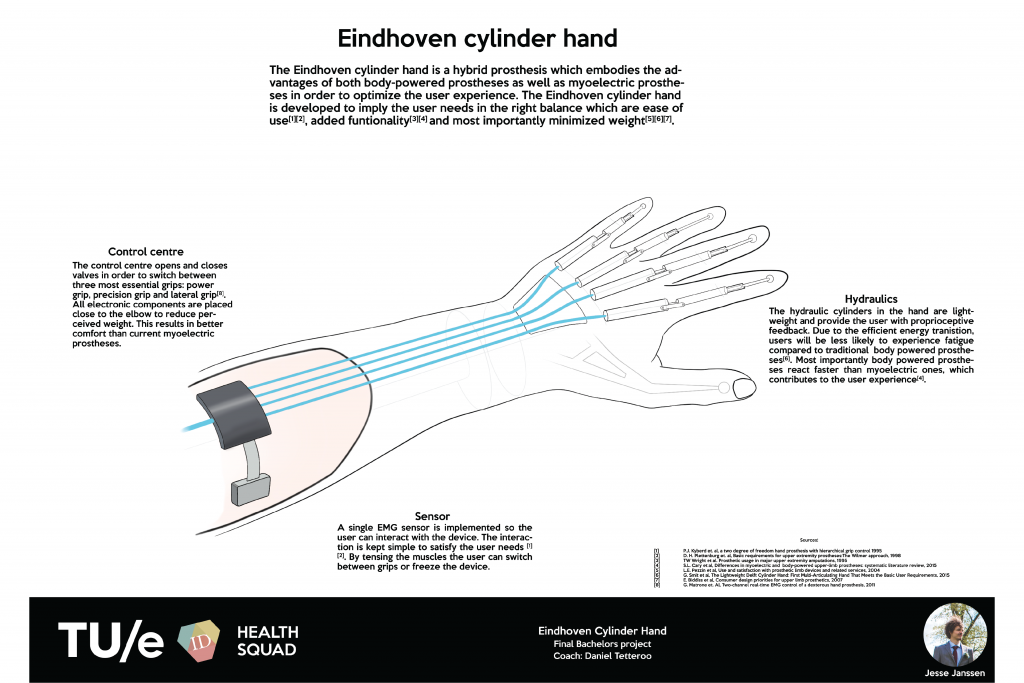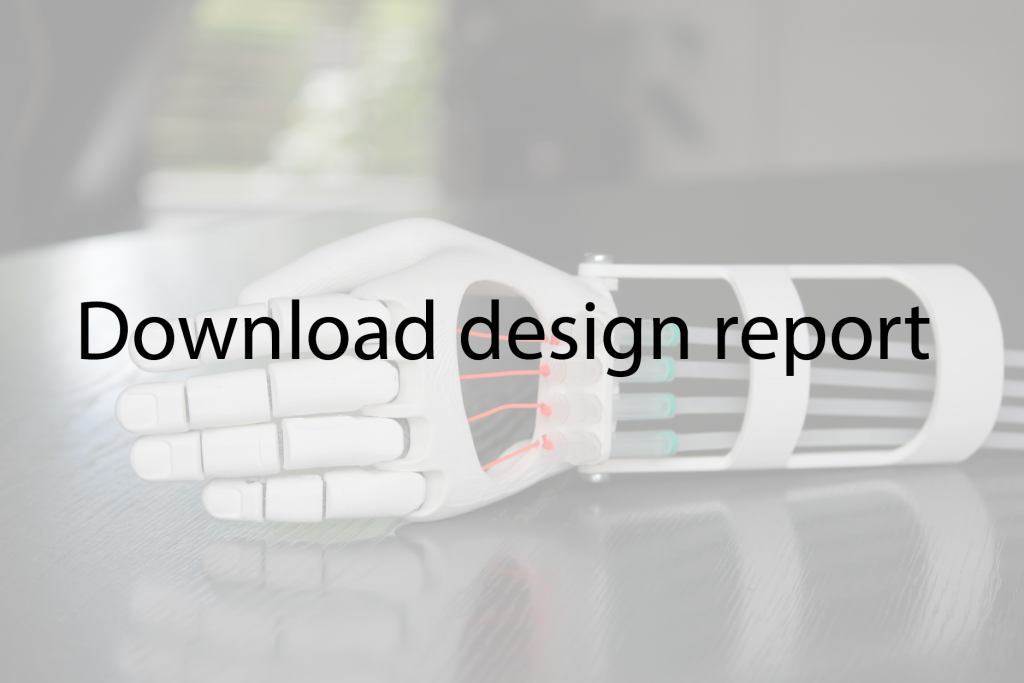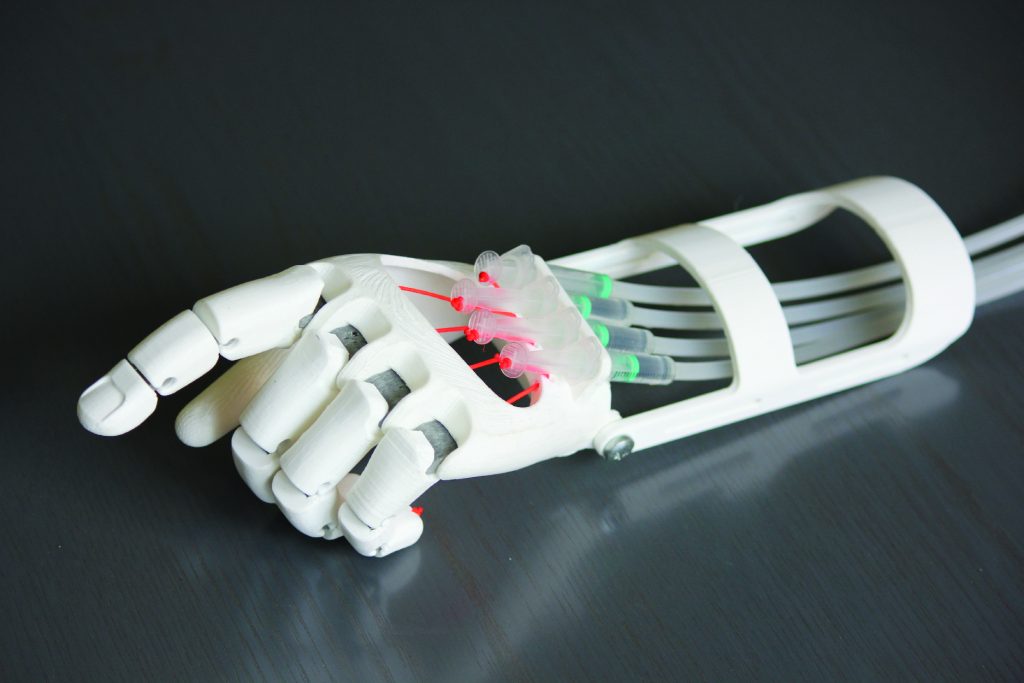Eindhoven cylinder hand
The Eindhoven cylinder hand is a hybrid prosthesis which embodies the advantages of both body-powered prostheses as well as myoelectric prostheses in order to optimize the user experience. The Eindhoven cylinder hand is developed to imply the user needs in the right balance which are ease of use [1][2], added functionality [3][4] and most importantly minimized weight [5][6][7].
In the early stages of the project, it became clear that reduced prosthesis weight was the most important aspect of a device. The Delft cylinder hand had accomplished an incredibly low weight of just 200 grams. However, its functionality was limited to only opening or closing the hand. I chose to built upon the work of the Delft cylinder hand by looking into ways of increasing the functionality while maintaining the low weight of the device. throughout the design process, the emphasis of the project was shifted towards interaction with the prosthesis. People with myoelectric prostheses often reported that their device would misinterpret their input, resulting in a wrong grip, while they mostly used just e few functions. In order to promote the ease of use, just 3 grips were included in my design. User test were conducted to optimize the interaction with the myoelectric sensor. If you are interested in the research process, the design report can be found here.
Sources:
[1] P.J. Kyberd et. al, a two degree of freedom hand prosthesis with hierarchical grip control 1995
[2] D. H. Plettenburg et. al, Basic requirements for upper extremity prostheses:The Wilmer approach, 1998
[3] TW Wright et al. Prosthetic usage in major upper extremity amputations, 1995
[4] S.L. Cary et al, Differences in myoelectric and body-powered upper-limb prostheses: systematic literature review, 2015
[5] L.E. Pezzin et al, Use and satisfaction with prosthetic limb devices and related services, 2004
[6] G. Smit et al, The Lightweight Delft Cylinder Hand: First Multi-Articulating Hand That Meets the Basic User Requirements, 2015
[7] E. Biddiss et al, Consumer design priorities for upper limb prosthetics, 2007
[8] G. Matrone et. Al, Two-channel real-time EMG control of a dexterous hand prosthesis, 2011
